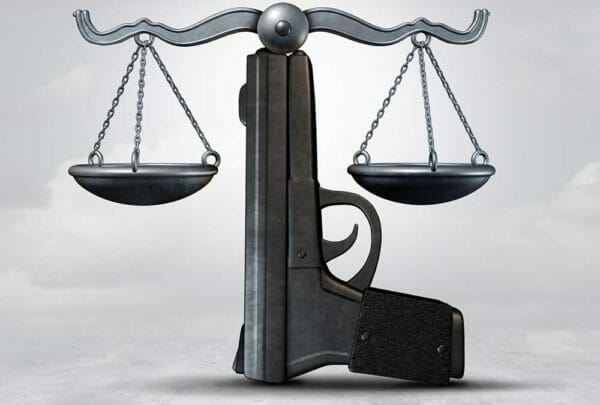
The Department of Justice has asked the courts to pause cases dealing with the Second Amendment. This action shows that the DOJ might be changing its position on gun cases.
Last week, President Donald Trump issued an executive order asking the DOJ to review all the cases currently being litigated to ensure that none violate an American’s Second Amendment-protected rights. President Trump gave Attorney General Pam Bondi 30 days to respond to the executive order.
It appears that the DOJ is acting on the President’s orders. The Department of Justice’s civil division is sending out a letter to the lawyers suing them, asking for a pause in the cases so the Department can review its stance. The DOJ could decide not to defend the Bureau of Alcohol, Tobacco, Firearms and Explosives (ATF) positions in court, meaning it would hand wins to the pro-gun side of the debate.
So far, action has only been taken by the DOJ’s civil division and not the criminal division. The civil division is responsible for defending the government’s position. The criminal division is accountable for taking action against those the government claims violated the law. There is no evidence that any criminal cases will be reviewed, although that is possible.
JUST IN: Per President Trump’s executive order, the Department of Justice is seeking to postpone oral arguments in the Eleventh Circuit for a lawsuit challenging the ATF’s pistol brace rule. They argue this delay is necessary as they may be adjusting their legal stances to better…
— SAF (@2AFDN) February 11, 2025
This action could mean the ATF could not defend cases such as the multiple cases surrounding pistols equipped with stabilizing devices or cases about Forced Reset Triggers (FRT). They could also choose not to appeal any of their many recent losses. Under the President Joe Biden administration, the DOJ vigorously defended the ATF’s overreach and suffered multiple losses at the hands of various gun rights groups.
Since the Supreme Court’s Bruen decision, the ATF has racked up countless defeats in court. Bruen eliminated means-end scrutiny. The federal government leaned heavily on intermediate scrutiny to justify its stances. Intermediate scrutiny is interest balancing, where the courts would consider the interest of the federal government over the rights of the people. SCOTUS said that the “Second Amendment is not a second-class right,” and only text, tradition, and history could be used to justify a gun law. Because of this decision, many gun laws have been struck down.
Another tool the ATF loved to use was Chevron deference. Chevron deference said that if a law or rule is ambiguous, the regulating agency gets to decide what the law means. This legal theory led to things like the now-dead bump stock ban. In another Supreme Court case, Looper Bright Enterprises, the Justices at the high court eliminated Chevron deference, meaning one of the ATF’s favorite tools to regulate guns is now gone.
Although most people celebrated the hold, seeing it as Donald Trump upholding the promise, some worry that it will be indefinite and that the ATF and DOJ are stalling to run out the clock. Time will tell. If, within 90 days, the DOJ stops defending certain cases, it could be a boom for the Second Amendment, leading to many court victories.
Gun owners will be watching. Politicians have promised gun owners the world in the past, only to backtrack and break their promises.
About John Crump
Mr. Crump is an NRA instructor and a constitutional activist. John has written about firearms, interviewed people from all walks of life, and on the Constitution. John lives in Northern Virginia with his wife and sons, follow him on X at @crumpyss, or at www.crumpy.com.

from https://ift.tt/s6vzATS
via IFTTT

No comments:
Post a Comment